Registrations are now open for the Summer 2024 Semester
EARN A DEGREE IN FOUR DOMAINS THAT WILL SHAPE THE FUTURE
CLOUD COMPUTING AND SECURITY
Our Networking & cloud programs helps you acquire Industry skills through practical experience using real-time projects.
PROGRAMMING & SOFTWARE TESTING
MCIT’s diploma in Java Programming focuses on core Software Development applications, readying students for various job roles. Learn manual and automated testing through our STQA program
BUSINESS & IT MANAGEMENT
Advance your management potential through accredited IT skills through our business Analyst & SAP programs.
MCIT: 4 KEY FEATURES THAT CREATE CAREERS
Learn on your schedule with 24/7/365 access to all course material.
- Hybrid learning
- Innovative teaching
- Schedules that fit yours
Seasoned pros provide expert guidance supported by 150+ company partners.
- Expert instructors
- Personalized feedback
- Mentoring
Relevant skills, and an impressive placement rate thanks to:
- Practical job-skills
- Project-based learning
- Curriculum partners
Backed by a network with 5000+ graduates, 100+ instructors:
- Career services
- Networking events
- Career path building
OUR GRADUATES RECEIVED OFFERS FROM

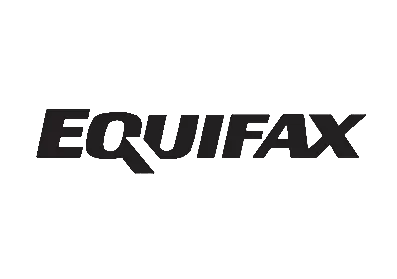

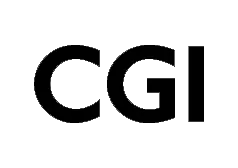
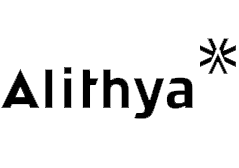
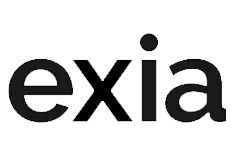
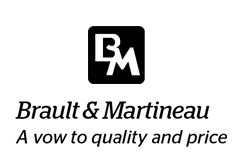

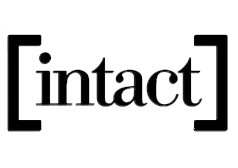
TOP PROGRAMS
Select the Option That Best Fits to You and Become Job Ready
TOP CERTIFICATIONS
Over 50 specialized certifications to choose from
WHO CAN APPLY TO PROGRAMS AT MCIT
Recent Graduates
Increasingly employers look for Job Ready Candidates, one who can hit the ground running and contribute immediately.
Hands on IT educations is the bridge between your degree and your career
- Master industry demanded skills
- Connect with our company partners
- Get new graduate financial support
- Benefit from our career services
Newcomers
We understand the challenges of starting a new life and a new career. Our curriculum is designed for the success of newcomers like you.
Bridge the gap between your experience and the Canadian job market.
- Master sought-after skills
- Connect with leading companies in Montreal
- Learn through practical experience and projects
- Access exclusive financial support for newcomers
- Benefit from comprehensive career services
Process Workers
Don't get left behind in the digital workplace. Enhance your skill set to meet the demands of the employers.
Gain the knowledge and tools to digitize your valuable expertise.
- Develop invaluable practical skills through our comprehensive curriculum
- Benefit from instructors who will help you
- Gain hands-on experience to be confident
- Open doors to exciting new career opportunities with your expanded skill set
IT Workers
Attention ambitious IT professionals! Looking to supercharge your career?
Build upon your existing IT knowledge with the latest IT tools
- Add new skills to your IT foundation
- Gain a competitive edge in the IT industry
- Embrace lifelong learning
- Access a valuable network of knowledgeable IT professionals
INSTRUCTOR SPOTLIGHT

Iraj Hedayati (Big Data Developer)
Iraj Hedayati is an experienced data engineer renowned for his expertise in data infrastructure, ETL processes, and data pipeline design. His impressive track record includes optimizing data systems for enhanced efficiency. Iraj is not only proficient in implementing robust data infrastructure solutions, as showcased in his GitHub profile, but he also actively contributes to the field of data science instruction.

Hossein Tanouri (Business Analyst)
Hossein Tanouri is a seasoned Project Portfolio Manager and Senior Business Analyst with a strong track record in business transformation. With expertise in Business Analysis and Business Process, Hossein brings valuable insights and strategic thinking to drive organizational growth and success.

Mirna Mardini (Java Developer)
Mirna Mardini, based in Montreal, Canada, is an accomplished developer and instructor with a diverse background spanning various roles and industries. Currently working at Tema Solutions as an ERP Developer/ Divalto, she excels in developing new features, installing functionality, and providing technical support.

Zaid Hossain (BI Developer)
Zahid Hossain is a seasoned professional with a rich background in Business Intelligence (BI) and IT projects. Currently serving as the Manager of Business Transformation at MSC Mediterranean Shipping Company in Montreal, Quebec, Canada, Zahid has been instrumental in driving significant changes within the organization.

Ahmad Mousavi (Cloud & Networking)
After a successful stint with Quebec's top game developer, Ubisoft as a virtualisation architect, Ahmad stepped aside to pursue his passion for teaching & developing IT infrastructure for medium sized enterprises, ground up. A product of Iranian university. He is the head of IT infrastructure & facility at Montreal College of Information Technology. A key resource in career pathway & mentorship for aspiring virtualisation experts.

Germán A. Torres (Cloud Instructor)
Germán, a dedicated Frontline Enablement Lead at Google, brings over 10 years of valuable experience to his role. As an accomplished engineer, entrepreneur, and technology enthusiast, he possesses an unwavering passion for work, applied sciences, and cutting-edge product design. Germán's visionary mindset led him to establish Rumbo Mobile Inc., a pioneering company that is dedicated to revolutionizing the parking marketplace with its innovative solutions.

Sami Islam (Cloud Instructor)
Sami Islam has 10+ years of experience in the IT and Consulting Industry, specializing in comprehensive Cloud solutions. With expertise in Agile Methodology, he has led numerous Cloud Transformation projects, including migration, CI/CD Pipeline automation, and Data Warehousing solutions. Sami holds multiple certifications, including Google Cloud Professional Cloud Architect, AWS Solutions Architect Associate, and Azure Certifications.

Dhruv Gusain (Java Developer)
Solutions Developer at TD Bank, Dhruv develops projects for students to work on as a part of their ongoing courses using Java, Spring, Hibernate and frontend technologies like JavaScript, HTML, CSS, and bootstrap. I also served as an instructor teaching fundamental programming concepts in Java and JavaScript, automated testing and enterprise java development.

Rebecca Spagnolo
With a background in Business Administration from John Molson's School and a information systems management at Concordia University has had a silver streak through some of the industry's best, including Radio Canada, Dotmar & Motovan Corporation, Rebecca's grip on the field is indomitable. Associated with MCIT for over 10 years, Her insights into career patterns and day to day on the job activities lend mentor guidance to aspiring SAP professionals.

Shridaran Kilvidi (Software Tester)
Sridaran is a Software Test Consultant and Trainer with 8 years of teaching experience in private colleges in Montreal and Toronto. With over 15 years of professional experience in Programming and QA, Sridaran has successfully managed Software Quality Assurance efforts for enterprise applications in finance, telecommunications, and service business domains. Passionate about sharing expertise and guiding aspiring professionals in the field of software testing.

Marwan Habshi
A fleeting Industry expert with over a decade in Business Intelligence and Analytics spent primarily in Tableau BI applications, Microsoft Power BI, OAC, PBCS, Data management, OBIEE and Essbase mostly in the big four consulting firms. An MBA and IT graduate who combines business goals with technological prowess. Dispenses his passion for knowledge & learning through teaching Business Intelligence & Data methodologies to ardent aspirants.

Parminderjit Singh (BI Instructor)
Parminder Jit Singh, with over 17 years of experience, is a highly skilled professional in MS SQL Server Azure and related technologies. He specializes in MS BI (SSIS, SSAS, SSRS), SharePoint, SQL Query Analyzer, SQL Server Management Studio, and Business Intelligence Development Studio. Parminder's expertise in delivering essential IT solutions is matched by his accessible mentoring style, guiding aspiring professionals effectively.

Toufiq Lazhri (Java Instructor)
Toufik is a University graduate in computer engineering and has been creating and implementing computer applications for over 25 years. He's been a valuable team member at MCIT for over 10 years teaching Java technologies. He is particularly known to transmit his knowledge in a clear and dynamic way to ensure students a successful transition to the job market.

Aimable Karangwa
With a masters in IT management and Certified Business Analyst Professional (CBAP) certification, Aimable is an industry standard Business Analysis expert. A PMI-Agile Certified Practitioner (PMI-ACP) with PRINCE2 Foundation certification, he has over 17 years of experience and has risen to be a senior business analyst consultant. Additionally, he is an instructor at our college, sharing his expertise with aspiring business analysts.
LATEST NEWS
Bill 96 and who does it apply to
You may be aware of the recent changes due to Act 14 and wondering what are the significant implications for…
Why Companies Invest in Technology During a Recession: Insights and Strategies
IT skills can prepare you for better times. It's time to act with greater urgency, sharper focus, and more hunger…
Navigating the Tech Company Layoff Wave: Why IT Training is More Crucial Than Ever
So, you've probably heard about the wave of layoffs happening in the tech industry. As a tech worker, this can…









